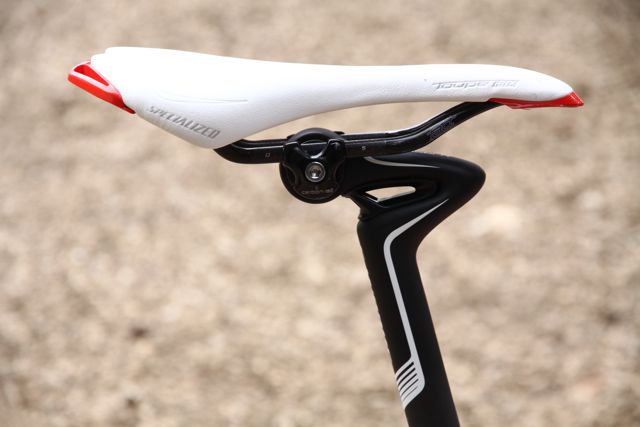The essential, simple guide to safety checks
These 10 easy checks will let you know if your bike is road worthy – and they only take five minutes.


by Amanda Beattie
These 10 easy checks will let you know if your bike is road worthy – and they only take five minutes. Although you should have your bike checked regularly by a mechanic, these tips will let you diagnose potential problems.
Tire air pressure
Running too little air pressure can result in a ‘snake bite’ or pinch flat when your tube gets stuck under the bead of your tire. While most flats are simply irritating, some blow outs, especially at high speed, can be extremely dangerous. Invest in a good quality floor pump and check your air pressure every time you ride. The recommended pressure can be found on the side wall of your tire.
Suspension air pressure
If you’re running front or full suspension, you should own a shock pump. Air pressure is based on the manufacturer’s suggestion, your weight and preference for a stiffer or softer ride. Check the specs in your owner’s manual or online.
Stem
A torque wrench is the best way to check if you’re running your stem too loose or too tight. If you don’t have tools, at least take a second to check if they are extremely loose. Pinch the front wheel between your knees and try and turn the handlebar. If it’s loose, it will shift and requires tightening.
Pedals and cranks
Check that they are tight. Bolts rattle loose because of vibration from bumpy roads and trails. Just because they were tight last time doesn’t mean they still are.
Seat post
A slipping seat post can be both extremely irritating and dangerous. Also, check that it’s straight. The seat should be fairly level, depending on your preference, and when looking from the back of the bike, it should be in line with your top tube.
Brakes
Check that your brakes actually will lock down. The simple test is to pull the brakes toward the bar as hard as you can and see if you can push the bike forward. If the wheels are still spinning with the brakes fully engaged, then they need work.
Derailleur
Run through your gears and make sure they aren’t skipping. Gears misfiring under load are dangerous and can damage the drivetrain.
Brake and shifter levers
Run your mountain bike brake and shifter levers slightly loose. This is where that mechanics ‘feel’ comes in handy. Your levers should be tight enough they don’t slip while riding, but loose enough that, should you crash, they will shift out of the way on impact. If they are too tight they will likely snap, an extremely costly replacement.
Water bottle bolts
Yes it sounds silly, but a rattling water bottle bolt on a 100 km ride can drive you insane. It can also distract you from the other, quieter, clicks and ticks. Every bike makes a bit of noise, some of which is normal. Making sure these little bolts are tight allows you to hear more problematic noises that may warn you to more serious mechanicals.
Frame Inspection
Take a close look at your bike. Look for any potential cracks, stress points or dents. Even if you didn’t crash, a micro crack can gradually grow into something worrisome months after an impact. If in doubt, take it to a shop for a full inspection.
